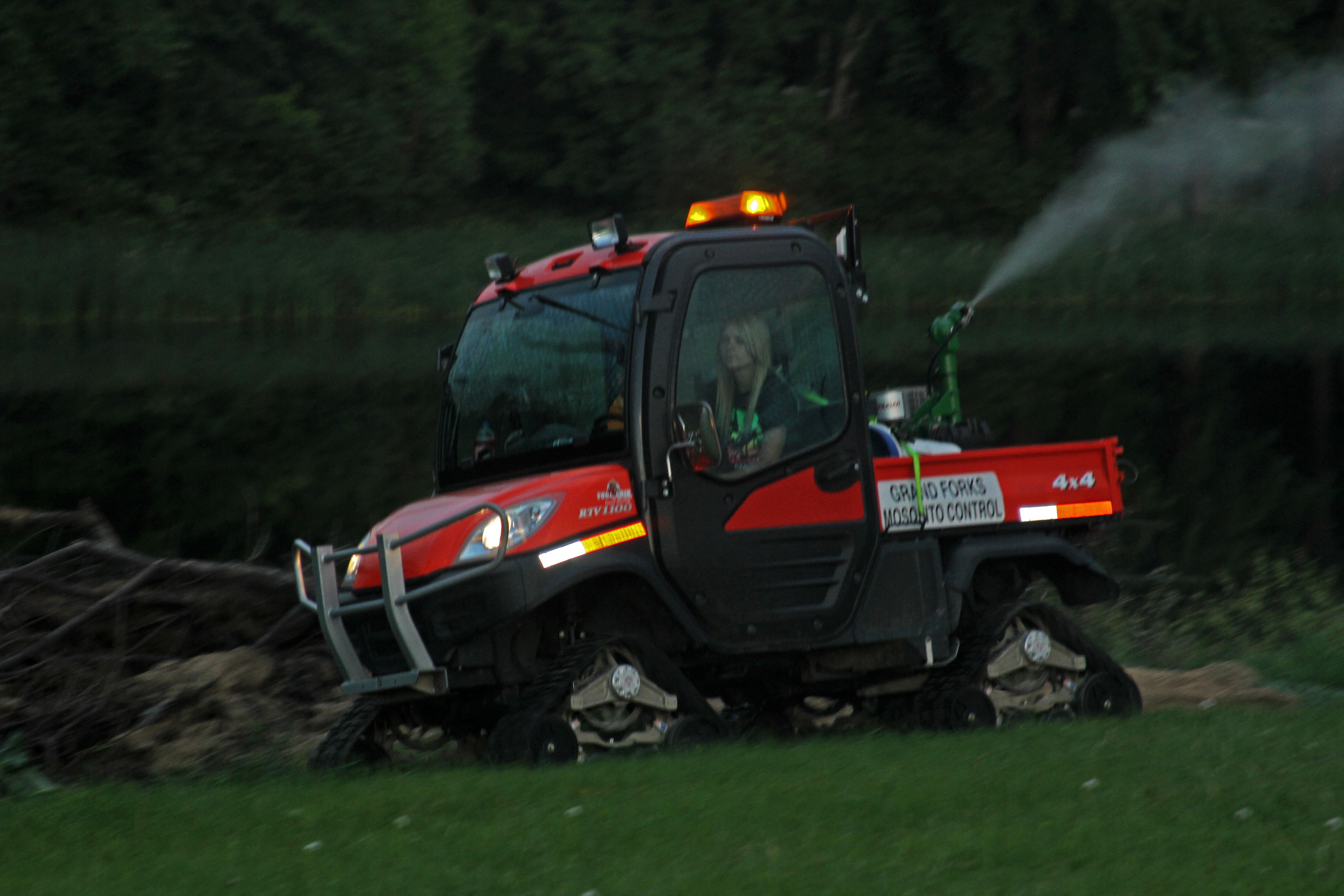Adult Mosquito Control (fogging)
Controlling Adult Mosquitoes
The City of Grand Forks employs a comprehensive mosquito control program that’s comprised of 5 distinct sectors; surveillance, public education, larviciding, adulticiding, and source reduction. Each sector plays an important role in reducing the risk of mosquito-borne disease and reducing the nuisance level of mosquitoes. While most of our resources are expended in surveillance and larviciding, the adulticiding program is an important component of this program as this provides the direct means to control adult mosquitoes and reduce the risk of mosquito-borne diseases. The public health pesticides used for adult mosquito control are registered by the EPA for use in residential, municipal, and recreational areas. These products are applied either by aircraft or on the ground employing truck-mounted sprayers. The City of Grand Forks primarily uses permethrin and/or etofenprox when ground spraying.
Mosquito adulticides are applied as ultra-low volume (ULV) sprays. ULV sprayers dispense very fine aerosol droplets that stay aloft and kill flying mosquitoes on contact. ULV applications involve small quantities of pesticide active ingredient in relation to the size of the area treated, typically less than 1.2 ounces per acre.
Adulticides can be used for public health mosquito control programs without posing risks of concern to the general population or to the environment when applied according to the pesticide label.
Citywide spraying will be considered when threshold criteria have reached the minimum action level.
Threshold: Establishing a threshold for adult mosquito control is based upon surveillance and monitoring efforts for immature and adult mosquito populations using several types of indicators. No one factor is always decisive for determining action. Often times a combination of quantitative or objective data must be evaluated to make “spray/ no-spray” decisions. Some of the factors considered prior to citywide spraying include mosquito population, species diversity, mosquito-borne disease activity, community events, specific (public) events, weather conditions (short term and future weather conditions) and environmental factors. The numeric values for the thresholds are subject to further refinement or modifications by the Mosquito Control Surveillance Division as circumstances or new information warrants.
Organophosphates
Synthetic Pyrethroids
This information provided by the EPA and the Grand Forks Public Health Department-Mosquito Control.
